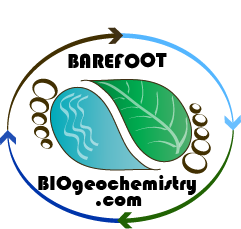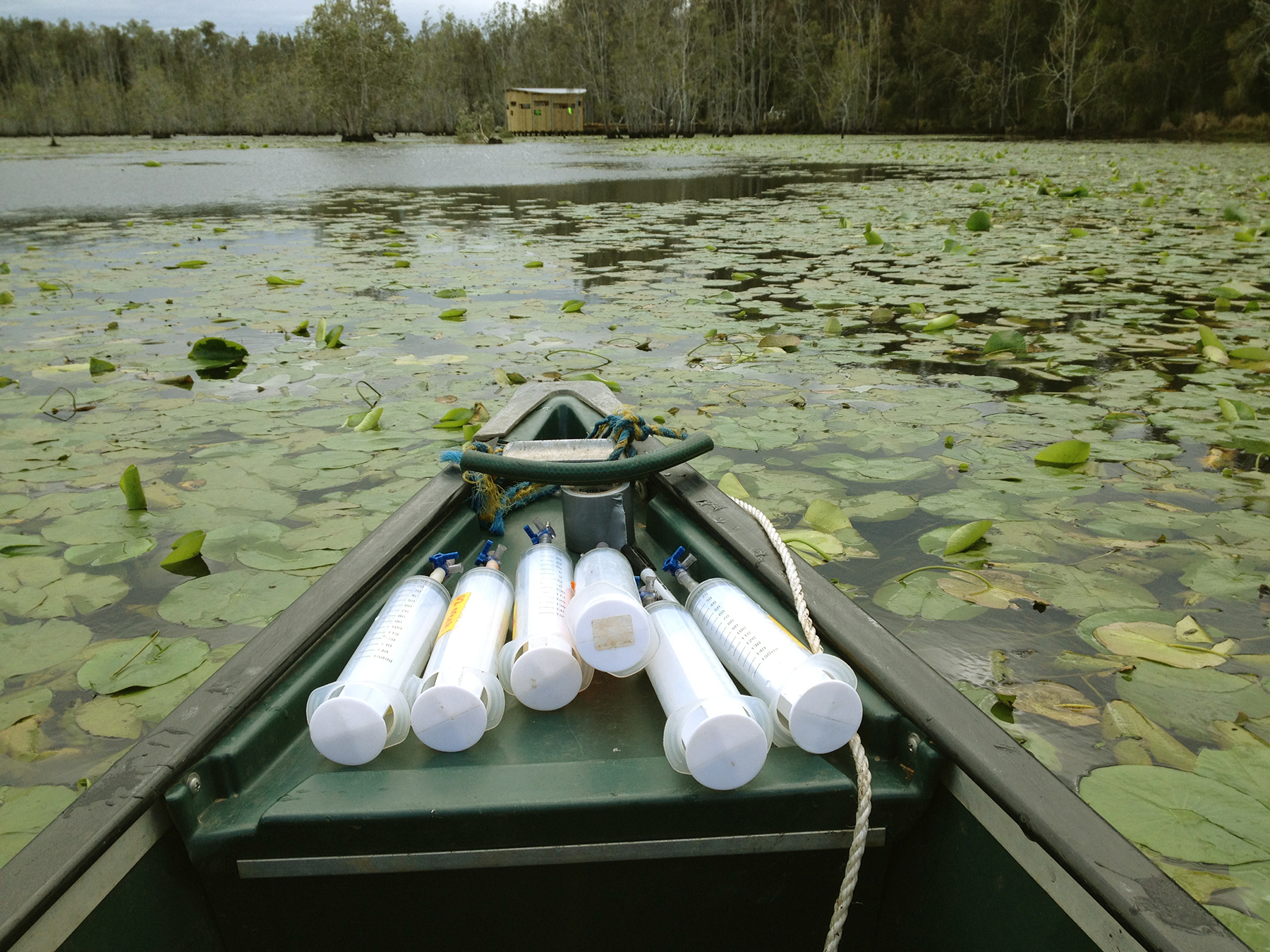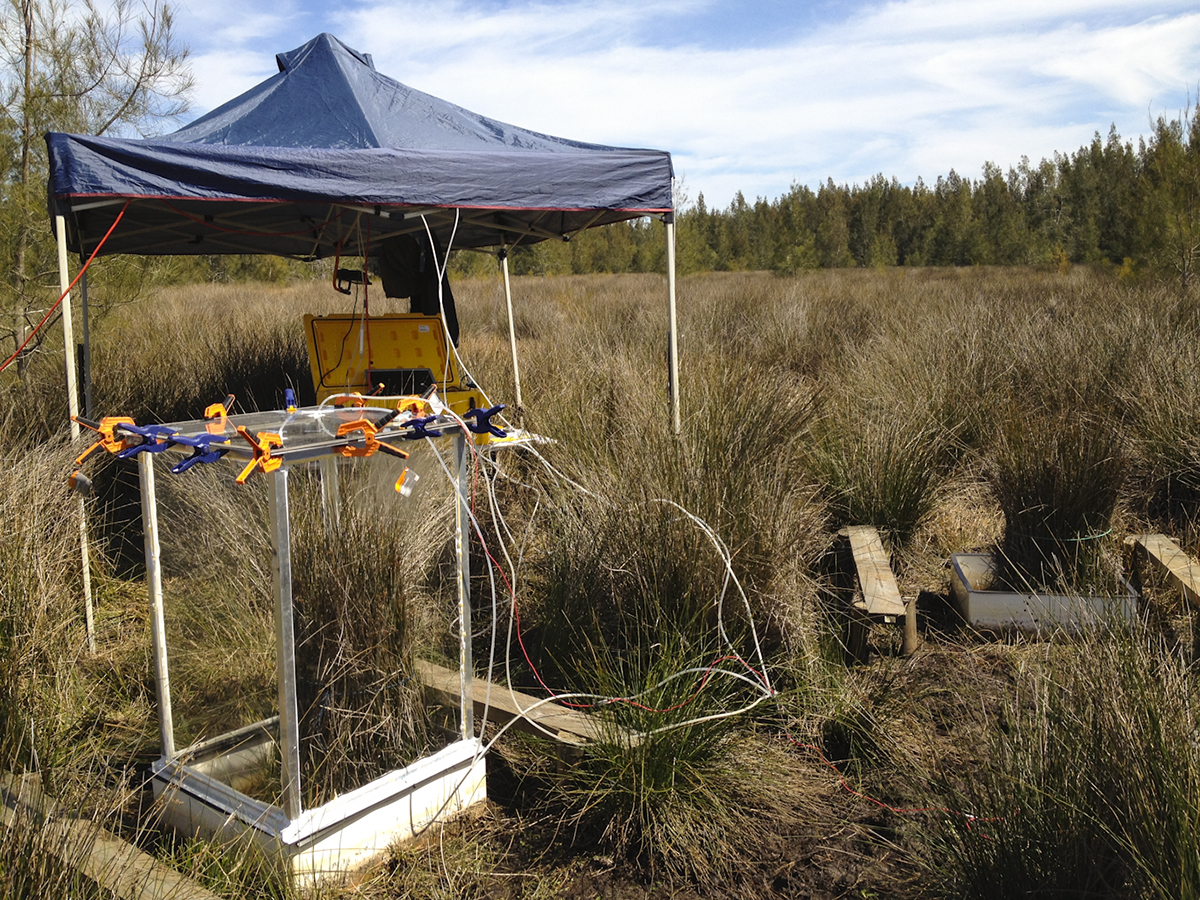Chasing methane
By LUKE JEFFREY
Background: Wetlands are hotspots for biodiversity and are highly efficient at capturing carbon dioxide (greenhouse gas) from the atmosphere. Due to their waterlogging nature, these valuable ecosystems can efficiently bury and store this ‘captured carbon’ within their sediments and are generally considered net carbon sinks. Wetlands however, are also one of the largest natural sources of methane (a more potent greenhouse gas), therefore understanding the drivers and pathways for methane emissions are important for land use management and in relation to climate change.
Cattai wetland
Early morning bliss
In early September, the barefoot team returned a third time to Cattai Wetland, to capture ‘drying conditions’ as part of a seasonal PhD dataset and ARC linkage project. The fieldwork team consisted of Dr Douglas Tait, Prof. Scott Johnson, Roz Hagan, volunteer and upcoming IP student; Kylie Macguire and PhD candidate Luke Jeffrey.
Our green house gas research station (also a bird hide)
Camp Cattai
This study will look at changes in seasonal freshwater wetland hydrology and vegetation ecotypes, and how these relate to methane emissions to the atmosphere. This will be coupled with a companion study looking at carbon burial rates, to overall assess the carbon sink/ source behaviour of adjacent remediated wetland sites (Cattai Wetland, NSW).
To account for diurnal variability of methane and carbon dioxide emissions, the recent fieldwork involved 24 hour continuous sampling of simultaneous vegetation ecotypes (at three ‘periodically inundated’ vegetated areas) as well as the drivers such as soil moisture, soil redox, temperature and sunlight.
Phragmites vegetation flux chamber
Measuring soil redox conditions with geoscience team
Picarro set up at site A amongst the casuarina forest
Dark chamber fluxes from freshwater lake
Methane ebullition bubble catchers ready for deployment
Juncus vegetation flux chamber and picarro timeseries station
Kylie recording the ebullition concentration and isotopes at the fieldlab
Luke Jeffrey collecting methane ebullition samples
At the same time we also measured diurnal aquatic carbon dioxide and methane emissions from the adjacent lake (a ‘permanently inundated’ freshwater wetland site) and accounted for both diffusive emissions (water to air), vegetation (lilies) and ebullition (methane bubble).
Compared to the previous flooded and mosquito plagued conditions of April 17, we encountered rather pleasant 4 degree nights and 30+ degree days, with a small dose of rain and gale force winds during the pack down, as nature reminded us who was boss! A massive thank you to all fieldworkers (Scott, Roz, Doug and Kylie) and lab and equipment preparation involved (Ceylena and Paul), and also Bob from Mid Coast Council for logistics and Matt Damon (aka ‘The Martian’) for inspiration, as the trip, sampling, camp fire songs and return to Earth went as smoothly and as efficiently as possible.












